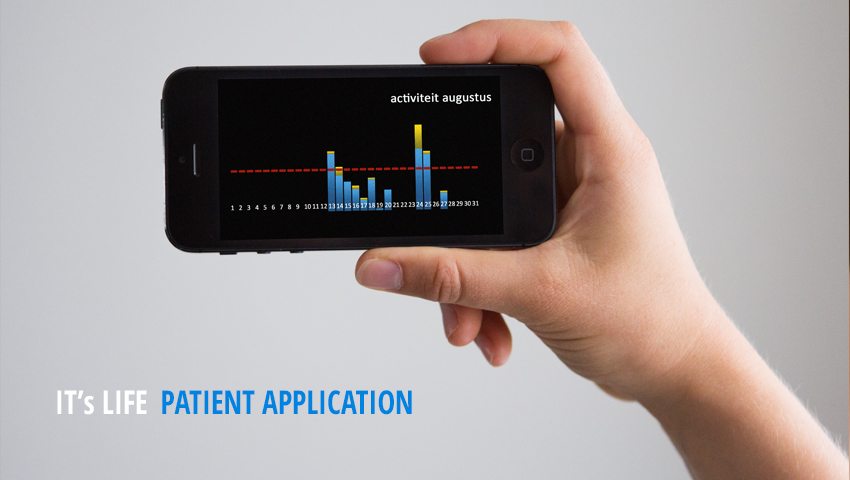Physical activity is important for maintaining quality of life in patients with chronic conditions. Physical activity reduces the amount of complications, exacerbations and required medication intake and has a positive effect on mood and energy level. For patients with COPD or diabetes, being sufficiently active is often difficult due to shortness of breath or overweight. Changing the behavior of these patient often proves challenging, as it has become embedded in an established lifestyle. Today’s health care providers are especially in need of effective strategies to coach these patients towards long-term increases in physical activity. Among the most effective interventions today are setting and revising behavioral goals, giving advice and self-monitoring. However, these methods require reliable data on the patient’s behavior, which are presently difficult to obtain. Consequently, care providers are spending valuable time and effort to collect information, often gathered from subjective reports. Shortly, there is a need for easy and accurate feedback on patients’ physical activity levels.
This has inspired the creation of a new tool: It’s LiFe!, the Interactive Tool for Self-management through Lifestyle Feedback. Its development has been a combined effort of Maastricht University, e-Health specialist Sananet and the mHealth developers of Maastricht Instruments. The tool consists of the MOX accelerometer, which is wirelessly connected to a smartphone and an online coaching system. Objective data on the amount of physical activity in relation to personal targets is measured by the wireless accelerometer and made available to the patient through an app and website.

The tool is embedded in a counselling program that consists of feedback and face-to-face coaching sessions from a doctor’s nurse. Doctors’ nurses can monitor their patients’ physical activity through the coaching system from within the family doctor’s office. The effectiveness of this approach has been evaluated in the dissertation of Sanne van der Weegen and Renée Verwey. Results of their studies are promising: The combined intervention of the coaching tool and doctor’s nurse support increases daily physical activity with 11 minutes in COPD and diabetes patients, in comparison to the regular care process. Patients and doctors’ nurses rated the intervention as highly positive.
The MOX eHealth accelerometer
The flexibility of the wireless MOX accelerometer greatly facilitated the development of an intervention, which had to be tailored to the specific needs of the patient group and caregivers. This required adaptability of the accelerometer algorithms and communication of the physical activity data with the other systems involved. In addition, there is research data to support the validity of the MOX eHealth accelerometer. The MOX shows high correlation to gold standards in treadmill protocols. The wireless physical activity sensor shows good correlation in daily living activities compared to the Actigraph GT3X, which is widely used in clinical research and known to correlate well with indirect calorimetry measures.
